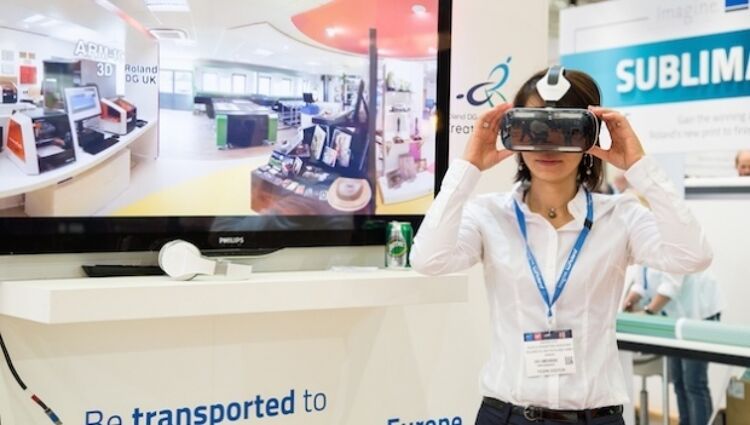FESPA Print Census #SixTrends: 4. Digital is the change enabler

The FESPA Print Census exposes several overarching trends which dominate the strategic thinking of printers on every continent.
Among them are the evolution of print from manufacturing to service industry; a changing product mix, moving from mass production to mass customisation; textile print growth in graphics, garment, decor and industrial markets; and the integration of print with digital media, in sign and display specifically.
Our community’s responses to the Census questions affirm one underlying factor very clearly; where each of these trends is concerned, digital technology is the change enabler.
When printers recognised the need to respond differently to their clients’ needs, and to transform their businesses with a value-added approach to service, digital technology held the key, with more efficient production, greater automation, slicker workflow and better online purchase interfaces.
There’s no doubt that contemporary digital technology can help printers to improve productivity, and that incremental digital enhancements can improve digital print quality, increase capacity, escalate output speed and reduce unit costs.
Printers are still actively investing in digital to adjust the manufacturing economics in their businesses.
But the Census indicates that the majority of printers have more strategic motives for digital capital expenditure. Having recognised the need to reduce their reliance on increasingly standardised, commodity products, they’re seeing the potential for digital technology to offer infinite customisation, transforming print in the process.
Digital investment continues unabated, and the motivator for most buyers is their ambition to move into new markets with new products or services. Standing still is not an option.
Textile is the perfect example, with 80% of printers surveyed reporting increased demand in this area. Now, digital technology is driving a revolution in the printing of textiles, bringing mass customisation to garments and decorative textiles for fashion applications and domestic and commercial interiors.
More than half of respondents to the FESPA Print Census expect garment printing, a segment traditionally dominated by screen, to migrate towards digital production in the next two years.
Over half of all FESPA Print Census respondents indicated their intention to buy digital wide format printing equipment, with a mean spending plan of close to 100,000 Euro.
Purchasing plans are dominated by UV printers, textile printers, solvent printers, eco-solvent printers and latex printers, but the focus is not solely on output, but also on finishing technology to enable the transformation of print into saleable products. Contour cutters and laminators top respondents’ planned acquisitions in finishing.
Ten years after FESPA launched its dedicated Digital exhibition, and as we gear up towards our 10th Anniversary FESPA Digital 2016 event in Amsterdam (RAI Exhibition Centre, March 8-11 2016), our community has come to appreciate the strategic significance of digital technology, not as a straight replacement for analogue processes, but as the enabler of a far more radical – and positive - transformation of business models, products and services, and customer relationships.
Click here to see and share the FESPA Print Census #SixTrends Infographic.
The FESPA Print Census is a global research project undertaken by FESPA in partnership with Infotrends to understand developments in the wide format, screen and digital print community.
The Print Census was funded through FESPA’s Profit for Purpose programme, which reinvests revenues from FESPA’s global events to support printers worldwide with insights, best practice and networking opportunities. The Census was conducted from May 2014 to April 2015, and surveyed over 1200 respondents in 64 countries, both face-to-face and online.
Topics
Interested in joining our community?
Enquire today about joining your local FESPA Association or FESPA Direct
Recent news

The importance of ink for large format printers
Ink is crucial for large format inkjet printers, influencing substrate compatibility, productivity, and cost. Nessan Cleary discusses the three main types which include UV-curable ink, latex ink and eco-solvent ink. Each ink type has specific strengths and weaknesses, making printers choice dependent on budget and intended applications.

What are the benefits of Direct-To-Fabric printing?
Direct-to-fabric printing is gaining popularity for high-volume textile production, enabling on-demand, customized short runs. These printers offer ink flexibility, accommodating various fabric types like cotton and silk, though ink development focuses on faster turnaround by reducing pre- and post-processing. Compared to traditional methods, direct-to-fabric inkjet printing is a more sustainable option due to reduced water and chemical usage, and localized production.

What are the opportunities for large format providers regarding digital touch screens?
Digital touchscreens are becoming increasingly common, offering businesses opportunities to improve customer engagement and streamline operations. Nessan Cleary shares, while more expensive to implement than standard digital displays due to complex software and integration needs, touchscreens provide self-service options, multilingual support, and can reduce staffing costs in various settings like retail, transportation, and healthcare.
